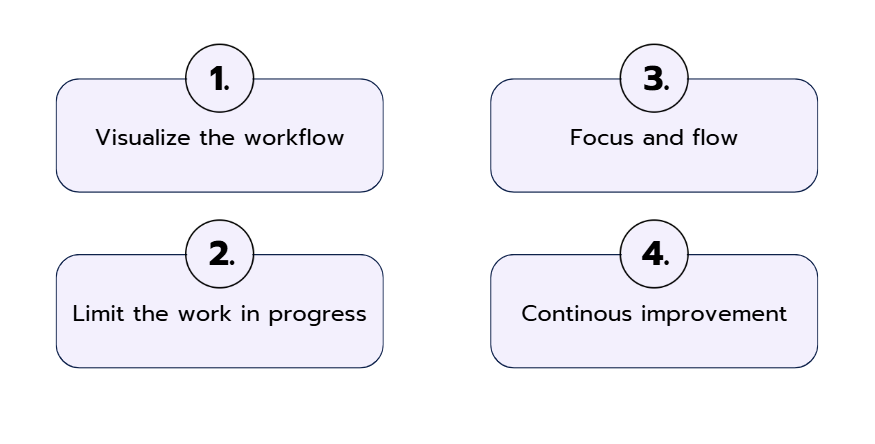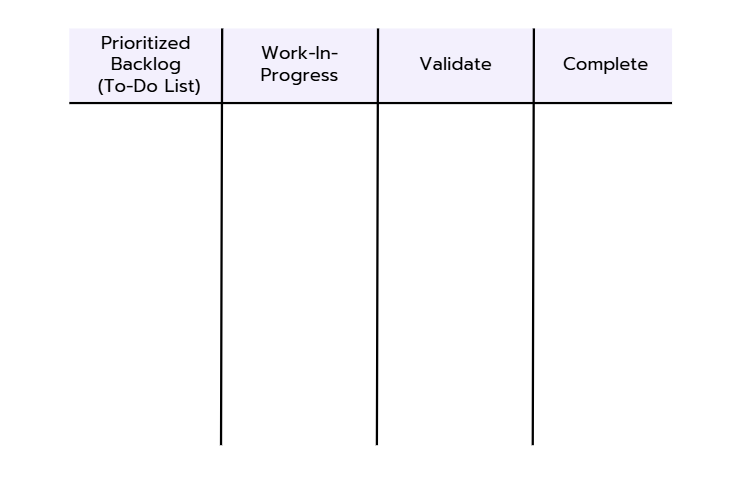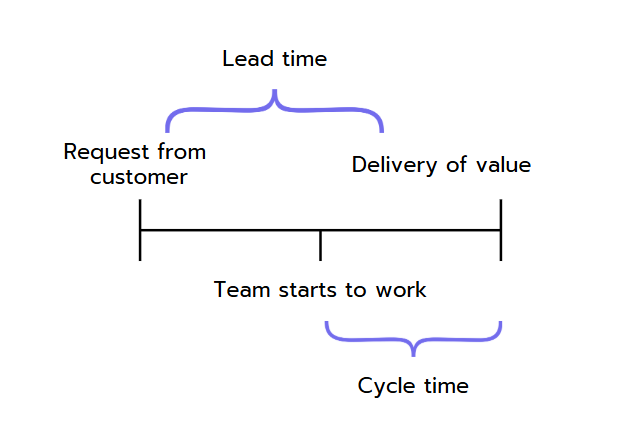In your journey to becoming an efficient consultant, understanding various work management systems is crucial. One such system that has made a profound impact, particularly in the world of technology and services, is Kanban.
Before we dive into the current applications of Kanban, it's important to acknowledge its origins. Kanban was born in the late 1940s within the walls of Toyota's manufacturing plant in Japan. Taiichi Ohno, an industrial engineer at Toyota, introduced Kanban to improve manufacturing efficiency. The word 'Kanban' translates to 'billboard' or 'signboard' in English, emphasizing the visual nature of the system. Ohno was inspired by the supermarket model of product replenishment, where stock is replaced as soon as it depletes. He applied the same principle to Toyota's production lines, effectively aligning inventory levels with actual parts of consumption. The implementation of Kanban led to significant improvements in Toyota's productivity and efficiency, setting the foundation for what we now call 'Lean Manufacturing'.
Fast-forward to the present, Kanban has evolved beyond manufacturing and found its way into the technology and services industries. The system, still true to its origins, is designed to maximize efficiency, limit work in progress, and, most importantly, visualize your work. Derived from the Japanese word for 'visual signal', Kanban is an effective tool for making intangible or invisible work more understandable.
By understanding the roots and evolution of Kanban, you, as a consultant, can better appreciate its applicability across industries and harness its principles to improve operational efficiency on diverse projects. It is also important to realize that Kanban is a process management system that aids decision-making in a collaborative manner.
Understanding Kanban Principles
One of the defining characteristics of Kanban is its adherence to existing work structures. Kanban isn't a disruptive force like Scrum; it's a set of four principles that respect current roles and responsibilities, thereby easily integrating into your current workflow.
The focus is on improving the flow of work, not changing what you're already doing. This pragmatic approach encourages leadership from all levels, fostering a team-wide commitment to making Kanban work.
If these principles resonate with you, you may want to take the first step into the Kanban world by creating a Kanban board.

Utilizing Kanban Boards
A Kanban board is a visual tool designed to categorize the various stages of work, from inception to completion. This process of transitioning tasks from one phase to another is referred to as the 'workflow'. Each stage in the workflow is represented by a column on the Kanban board.
Kanban boards can be as simple or as complex as required. While it's usually recommended to start simple, more columns can be added to represent additional stages in the workflow as needed. Digital tools like Trello and Jira, as well as physical boards on walls or whiteboards, can all serve as Kanban boards.

The Power of Kanban Cards
The basic units of a Kanban board are Kanban cards. Each card represents a work item and is moved across the board as it progresses through the workflow. Each card should have a title, a description, and an owner. It can also include additional details, such as due dates.
It's important that the tasks represented by Kanban cards are manageable in size. Too large, and a card could stagnate, clogging up the workflow. Too small, and your board could become chaotic and difficult to manage.
The use of cards in this way has several benefits. For instance, bottlenecks in the workflow become visible as cards start to pile up, and over time, teams can better gauge the size of tasks that can be handled efficiently.
Understanding Flow and Lead Time
'Flow' refers to the smooth transition of work from the backlog to the 'done' state. By visualizing the work process, Kanban helps teams improve this flow, increasing productivity.
Once you've mastered the concept of flow, the next metric to consider is 'lead time'. Lead time measures the time it takes for a card to traverse the entire workflow, from the moment work begins on it to the point when it's completed and delivered to the customer.
In conclusion, understanding and implementing the Kanban system can significantly enhance your efficiency as a consultant. By visualizing work, managing tasks, and optimizing flow, Kanban can bring method to the madness, even in the most chaotic (remember the Stacey-Matrix) of work environments.

Why Should I Know About Kanban When I Want to Be an IT Consultant?
Understanding and utilizing the Kanban system can be particularly advantageous for IT consultants. In the ever-evolving world of IT, where multiple tasks and projects run concurrently, the visual nature of Kanban can significantly aid in managing complex workflows. It can help identify bottlenecks early, enabling consultants to streamline processes and enhance productivity.
Furthermore, by measuring lead time, consultants can gain valuable insights into project timelines, improving their capacity for accurate planning and forecasting. As a result, they can provide more reliable delivery estimates to clients, enhancing customer satisfaction and trust. Additionally, the adaptability of Kanban allows for its use in a variety of IT projects, irrespective of the methodologies being used, be they Agile, Scrum, or others. Therefore, a strong understanding of Kanban equips IT consultants with a versatile tool that can improve their efficiency and deliver better results for their clients, especially those who are in digital transformation.

